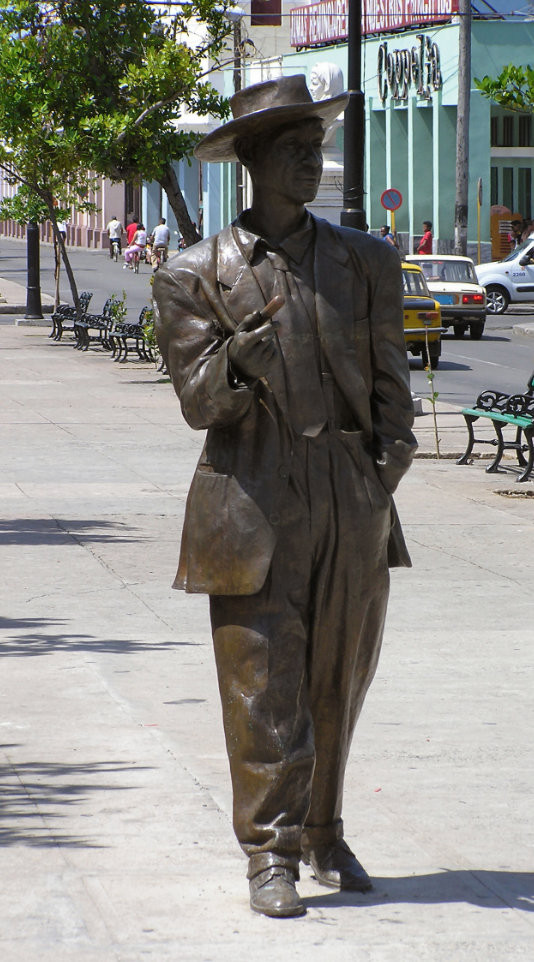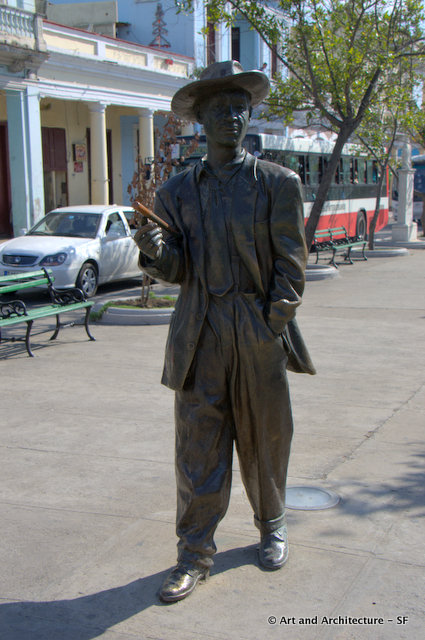January 16, 2015
The day started at 5:00 in the morning to get to the airport for the Cuban airport hustle. It essentially means that you get to the airport, hand your tour handler your passport, $20 for baggage and your visa. Then you stand and wait. That process took over an hour.
However, our standing around was more unusual than most folks, since on our departure date the stand off between Cuba and the US was cracked open just a bit more. We were joined by television cameras to greet us, take our pictures and interview a handful of our group.
Then through TSA to sit and wait some more. This wait was for weather. It was foggy on the ground in Santa Clara so we waited for that to burn off.
Once in the air it was 40 minutes. Forty minutes to look down upon the ocean and contemplate how many people have made that trek crammed on escaping, rickety boats. Landing in that short period of time hits you like a brick for just the same reason. A simple 40 minutes out of our lives spent happily talking on an airplane, 40 minutes that millions of Cubans, till now, have not been able to spend.
Our first stop was the Che Gueverra monument just outside the Santa Clara airport.
Che is the hero of Santa Clara, a vital spot in the revolution. Batista knew that if he lost Santa Clara he would lose the fight, and it was Che that secured the area of Santa Clara for Castro and the revolution, forcing Batista to give up and leave Cuba.
 The monument was designed by architect Jorge Cao Campos and sculptor Jose Delarra. Che’s remains are in this mausoleum, along with the remains of his comrades that died fighting with him in Bolivia.
The monument was designed by architect Jorge Cao Campos and sculptor Jose Delarra. Che’s remains are in this mausoleum, along with the remains of his comrades that died fighting with him in Bolivia.
Our next stop was lunch at the Club Cienfuegos in the Punta Gorda portion of Cienfuegos. The city, named after Governor Jose Cienfuegos was built by the French in 1819. These French were predominantly from New Orleans, Haiti and Bordeaux. The city sits on the Punta Gorda and the Club Cienfuegos is a boating club, with, primarily catamarans as members as far as I could see.
Our stay was at the Hotel Union. You can see how stunning it would have been in its heyday with a central open court, columns and ornamental railings. We were told this would be our best hotel during our trip to Cuba, in hindsight, I don’t think this was true, it was very similar to most that we stayed in.
*
The center of Cienfuegos, Jose Marti Plaza, is a UNESCO world heritage site, chosen as a singular model of 19th century urban planning in Cuba and the Caribbean.
On the Cienfuegos Promenade Prado is a bronze statue of Benny Moré, often thought of as the greatest Cuban popular singer of all time. He was a tenor and a master of most genres of Cuban music. Moré formed and led the leading Cuban big band of the 1950s, until his death in 1963. Click here to listen.

The Tomás Terry Theater whose name sake was a plantation owner and local patron of the arts. Built in 1890 it has been the stage for such notables as Enrico Caruso, Sara Bernhardt and Mexican movie star Jorge Negrete.
Dinner was at in the courtyard of an amazing home, Valle Palace. Built between 1913 and 1917 at a cost of 1.5 million pesos it was the collaboration of French, Arab, Italian and Cuban architects and is made of materials from all over the world. A gift from husband Acisclo del Valle Blanco, to his wife it was conceived on the couples trip to Spain.
I will include our official itinerary at the end of each specific day post, as some items will be covered in more depth in their own post.
1/16/15
5:15AM Meet CJ Cueto in the lobby of the hotel
5:30 Arrive at Airport and begin check in
8:00 Flight Departs Miami
9:00 Arrive Santa Clara, proceed through customs/immigration and baggage claim
Visit to the Che Memorial in the heart of Santa Clara
Transfer to Cienfuegos
Walking City tour
Cienfuegos Choir
Dinner at Los Laurels
Overnight Hotel La Union




































